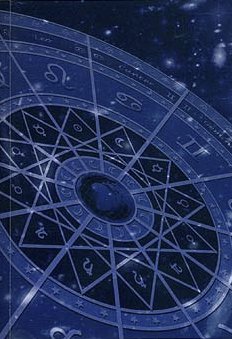Stanita: 10 definitions
Introduction:
Stanita means something in Hinduism, Sanskrit. If you want to know the exact meaning, history, etymology or English translation of this term then check out the descriptions on this page. Add your comment or reference to a book if you want to contribute to this summary article.
In Hinduism
Purana and Itihasa (epic history)
Source: Cologne Digital Sanskrit Dictionaries: The Purana IndexStanita (स्तनित).—A Bhārgava gotrakāra.*
- * Matsya-purāṇa 195. 21.

The Purana (पुराण, purāṇas) refers to Sanskrit literature preserving ancient India’s vast cultural history, including historical legends, religious ceremonies, various arts and sciences. The eighteen mahapuranas total over 400,000 shlokas (metrical couplets) and date to at least several centuries BCE.
Jyotisha (astronomy and astrology)
Source: Wisdom Library: Brihat Samhita by VarahamihiraStanita (स्तनित) refers to the “roaring of clouds”, according to the Bṛhatsaṃhitā (chapter 5), an encyclopedic Sanskrit work written by Varāhamihira mainly focusing on the science of ancient Indian astronomy astronomy (Jyotiṣa).—Accordingly, “Lunar and solar eclipses terminate in ten ways [...] If, within the said period [i.e., seven days], there should occur any meteoric fall, the ministers will die; if clouds of various hues should appear, mankind will suffer from various fears; if clouds should begin to roar [i.e., stanita], there will be miscarriage of pregnancy; if lightning should appear, rulers and tusked animals will suffer. [...]”.

Jyotisha (ज्योतिष, jyotiṣa or jyotish) refers to ‘astronomy’ or “Vedic astrology” and represents the fifth of the six Vedangas (additional sciences to be studied along with the Vedas). Jyotisha concerns itself with the study and prediction of the movements of celestial bodies, in order to calculate the auspicious time for rituals and ceremonies.
Languages of India and abroad
Sanskrit dictionary
Source: DDSA: The practical Sanskrit-English dictionaryStanita (स्तनित).—p. p. [stan-kartari kta]
1) Sounded, sounding, noisy; वीचीक्षोभस्तनितविहगश्रेणिकाञ्चीगुणायाः (vīcīkṣobhastanitavihagaśreṇikāñcīguṇāyāḥ) Meghadūta 28.
2) Thundering, roaring.
-tam 1 The rattling of thunder, rumbling of thunder-clouds; तोयोत्सर्गस्तनितमुखरो मास्म भूर्विक्लवास्ताः (toyotsargastanitamukharo māsma bhūrviklavāstāḥ) Meghadūta 39.
2) Thunder, noise.
3) The noise of clapping the hands.
4) The sound of a vibrating bowstring.
Source: Cologne Digital Sanskrit Dictionaries: Shabda-Sagara Sanskrit-English DictionaryStanita (स्तनित).—n.
(-taṃ) 1. The rattling of thunder, the rumbling of thundering clouds. 2. The noise of clapping the hands. E. stan to sound, aff. kta .
Source: Cologne Digital Sanskrit Dictionaries: Cappeller Sanskrit-English DictionaryStanita (स्तनित).—[adjective] thundering; [neuter] thunder.
Source: Cologne Digital Sanskrit Dictionaries: Monier-Williams Sanskrit-English Dictionary1) Stanita (स्तनित):—[from stan] mfn. thundering, sounding, [Mahābhārata]
2) [v.s. ...] n. (ifc. f(ā). ) thunder, [Kauśika-sūtra; Manu-smṛti; Mahābhārata] etc.
3) [v.s. ...] n. loud groaning, [Harivaṃśa]
4) [v.s. ...] the sound of a vibrating bowstring, [Bhāgavata-purāṇa]
5) [v.s. ...] the noise of clapping the hands, [cf. Lexicographers, esp. such as amarasiṃha, halāyudha, hemacandra, etc.]
Source: Cologne Digital Sanskrit Dictionaries: Yates Sanskrit-English DictionaryStanita (स्तनित):—(taṃ) 1. n. The rattling of thunder; noise of clapping hands.
Source: DDSA: Paia-sadda-mahannavo; a comprehensive Prakrit Hindi dictionary (S)Stanita (स्तनित) in the Sanskrit language is related to the Prakrit words: Thaṇia, Thaṇiya.
[Sanskrit to German]
Sanskrit, also spelled संस्कृतम् (saṃskṛtam), is an ancient language of India commonly seen as the grandmother of the Indo-European language family (even English!). Closely allied with Prakrit and Pali, Sanskrit is more exhaustive in both grammar and terms and has the most extensive collection of literature in the world, greatly surpassing its sister-languages Greek and Latin.
Kannada-English dictionary
Source: Alar: Kannada-English corpusStanita (ಸ್ತನಿತ):—
1) [adjective] sounded; roared.
2) [adjective] roaring; crying in a rumbling voice.
--- OR ---
Stanita (ಸ್ತನಿತ):—
1) [noun] a loud, explosive, resounding noise produced by the explosive expansion of air heated by a lightning discharge; a thunder.
2) [noun] any loud noise.
3) [noun] the sound made by clapping with both the hands.
4) [noun] the sound produced by pulling and releasing suddenly the string of a bow.
5) [noun] (jain.) a class of gods.
Kannada is a Dravidian language (as opposed to the Indo-European language family) mainly spoken in the southwestern region of India.
See also (Relevant definitions)
Starts with: Stanitakumara, Stanitamara, Stanitaphala, Stanitasamaya, Stanitasubhagam, Stanitavimukha.
Ends with: Abhistanita, Anustanita, Meghastanita, Savidyutstanita, Vamshastanita.
Full-text (+2): Stanitakumara, Stanitaphala, Stanitasubhagam, Meghastanita, Vamshastanita, Stan, Stanitasamaya, Stanitavimukha, Stanitamara, Anustanita, Thania, Tanitam, Bhavanapati, Meghastanitodbhava, Savidyutstanita, Thaniya, Svanita, Bhavanadhipa, Bhavanavasin, Kadamba.
Relevant text
Search found 7 books and stories containing Stanita; (plurals include: Stanitas). You can also click to the full overview containing English textual excerpts. Below are direct links for the most relevant articles:
Trishashti Shalaka Purusha Caritra (by Helen M. Johnson)
Part 18: The Bhavanapatis < [Chapter III - The initiation and omniscience of Ajita]
Part 15: Mahāvīra’s (Vīra’s) mokṣa (nirvāṇa, emancipation) < [Chapter XIII - Śrī Mahāvīra’s nirvāṇa]
Part 7: Defense of Prasenajit < [Chapter III - Birth, youth, initiation, and omniscience of Śrī Pārśva]
Historical Elements in the Matsya Purana (by Chaitali Kadia)
Lineages of Bhṛgu < [Chapter 6 - Human history in the Matsya-Purāṇa]
Manusmriti with the Commentary of Medhatithi (by Ganganatha Jha)
Verse 4.103 < [Section XIII - Days unfit for Study]
Amarakoshodghatana of Kshirasvamin (study) (by A. Yamuna Devi)
Atmosphere, space, direction, etc. < [Chapter 5 - Aspects of Nature]
The Brahma Purana (by G. P. Bhatt)
The Agni Purana (by N. Gangadharan)